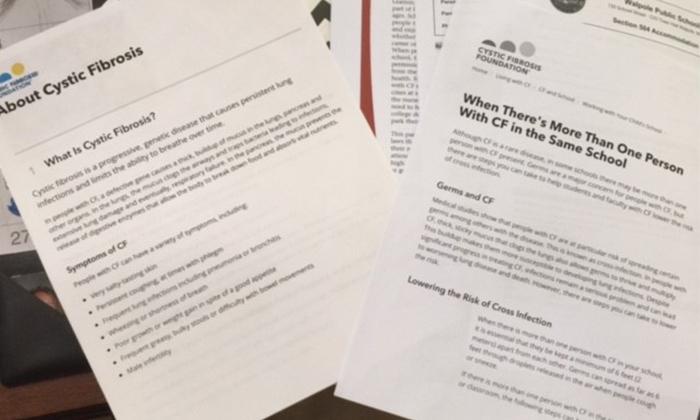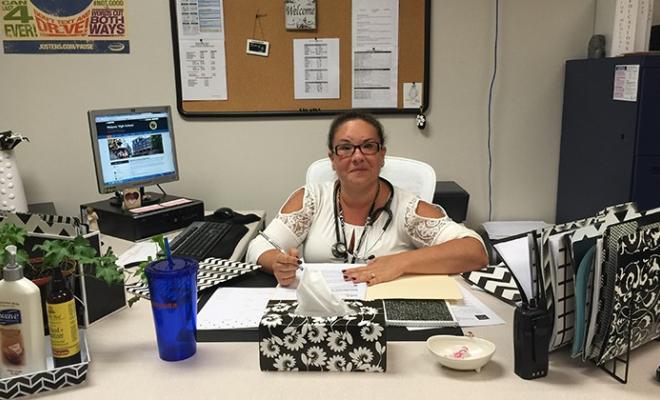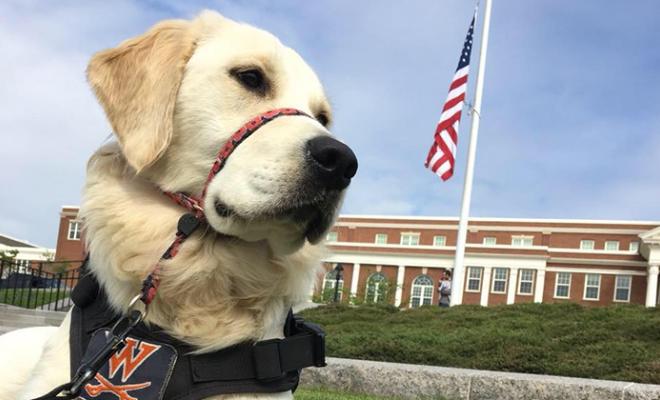When I was 14 years old, Matt, Jim, Holly and I would take two buses and a train to go to Children's Hospital in Boston to see our friend, Aidan.1 Aidan had cystic fibrosis and would go into the hospital to have a “clean out” about every three months. A majority of the patients at Unit 9 West at Children's, where Aidan used to stay, were people with CF, supporting each other and forming friendships. Little did anyone know at that time, but this common thread would soon be the very thing that would keep them apart.
Fast forward 30 years, and CF has become a huge part my career. I am a high school nurse responsible for 1,200 students, three of whom have cystic fibrosis. Times have changed — especially with the discovery of CF cross-infection and its potentially devastating consequences. And for the last 12 months, I have been preparing for the upcoming school year in anticipation of having these three students with CF under my care.
It didn't take me long to realize that this situation — three kids with CF in one school — was not a common occurrence. Although over 30,000 people in the United States have CF, it's unusual to have three unrelated individuals under one roof, 7.5 hours a day, 183 days a year. Although the information I found about CF and going to school was great and plentiful, virtually nothing outlined the steps you should take when you have three students with CF in one building.
Given my personal involvement with CF and my professional commitment to school nursing, I became determined to come up with a safe and feasible plan for three unique students. Aside from the logistical difficulties such as scheduling their classes, I also had to take into consideration their specific health needs and individual welfare. The head of the guidance department and I decided to start by creating schedules for these three students, taking into account that none of them should be in the same class at the same time or within 90 minutes of one another. Fortunately, two of the students are freshmen and one is a sophomore, which made it a little easier to meet their educational needs.
Once their classes had been scheduled, I then needed to think about other circumstances such as lunchtime, hallways, extracurricular activities, assemblies, shared computer use and visits to the nurse's office. In order to try to decrease the chances of cross-infection, I created a “Student with Cystic Fibrosis Fact Sheet and Action Plan” for each student. This template gave each student specific “point places” and the teachers specific instructions.
Next, I had a brief meeting with each student and their families for input. I was pleased to discover that all three of these students are great kids with equally great parents. Although they have managed their disease well, they are also anxious about this situation.
As one parent stated, “We all understand that not everything can be controlled, but we are confident that you will leave no stone unturned.”
My ultimate goal is for all of my students to have a safe and memorable high school experience, and these three students are no exception.
I will meet with each student and their parents again before the first day of school to review each of their action plans and provide them with copies of the other two students' plans. This will allow me to make sure that each of them has pictures of the other students with CF as well as an awareness of their plans. At that time, I will also review their respective 504s or Individualized Education Plans (IEPs). I am also having a schoolwide meeting with all high school staff to not only review what CF is, but to also educate them about the implications of having three students with CF under one roof. I will provide each staff member with a copy of each student's action plan and schedule, a short general CF fact sheet and copies of the Cystic Fibrosis Foundation's “When There's More Than One Person With CF in the Same School” and “A Teacher's Guide To CF.”
I know that I can't control everything, but I am going to try my best to keep these students as safe as I can. As for my friend Aidan, he did contract Burkholderia cepacia via cross-contamination. We remained good friends over the years and as advances were made relating to CF, he and I shared in the hope that a cure would be found. Sadly, he died at the age of 27, with his family and friends at his side. He donated his organs and tissue to CF research, and I can only hope that he made a difference for others; he certainly made a difference in my life.
If you are interested in seeing Rachel's fact sheet and action plan template, feel free to email her at hanson657565@msn.com.
¹All names changed for privacy






